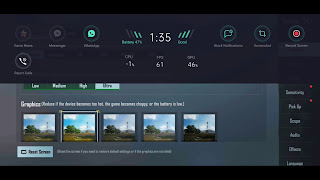History of the Internet
The history of the Internet began in the 1950's with the advancement of the electronic computer. The first public perception of the Internet was when computer science professor Leonard Kreinrock sent a message from his laboratory at the University of California, Los Angeles (UCLA) to the Stanford Research Institute (SRI) via ARPANET. The second part of the network equipment was installed there.
In the late 1980's and early 1980's, packet switching networks such as the UK's NPL, Cyclidis, Merit Network, Timnet and Telenet's Orpanet, Mark I were developed using different protocols. Orpanet provides special leadership for the development of Internetworking protocols, where multiple individual networks of networks can be connected to a single network.
It was expanded for access to ARPANET in 1981, when the National Science Foundation (NSF) developed the Computer Science Network (CSNAT), and again in 1986, when NSFNET provided access to supercomputer sites from research and educational institutions in the United States. Commercial Internet Service Providers (ISPs) began to emerge in the late 1980's and early 1990's. Orpanet was shut down in 1990. The Internet became a commercial commodity in 1995, when the NSFNet ceased to exist, and the last ban on commercial use of the Internet was lifted.
Since the mid-1990s, Internet forums, blogs, social media, including Internet culture and commerce, and near-instant communication, such as electronic mail, instant messaging, Voice over Internet Protocol (VoIP) "phone calls", two-way interactive video calls, and the World Wide Web. Networking services and online shopping have a revolutionary impact on web sites.
The research and education community continues to develop and use advanced networks, such as the NSF's ultra-high-speed backbone network service (VBNS), Internet 2, and the national Lamdarel. Large amounts of data are exchanged between high-speed fiber optic networks that are 1-Gbit / s, 10-Gbit / s, or more.
Today, the Internet is constantly evolving for information, business, entertainment and social networking.
The Internet is a set of interconnected computer networks that are open to the public and where data is exchanged through an authentic system called IP or Internet Protocol. It is worth mentioning here that although many people consider the Internet and the World Wide Web as synonyms, in reality the two words indicate different things.
The Internet is an acronym for Interconnected Network. It is formed by connecting computer networks to each other through special gateways or routers. The Internet is often referred to as the Net.
The term Internet is considered a noun when referring to the international system of a complete IP network.
Conclusion
The Internet and the World Wide Web are often used in everyday conversation without distinction. However, the Internet and the World Wide Web are not the same. The Internet's hardware and software infrastructure establishes an international information communication system between computers. In contrast, the web is one of the services provided through the Internet. It is linked by interconnected documents and other resource collections, hyperlinks and URLs.







Very helpful for Everyone